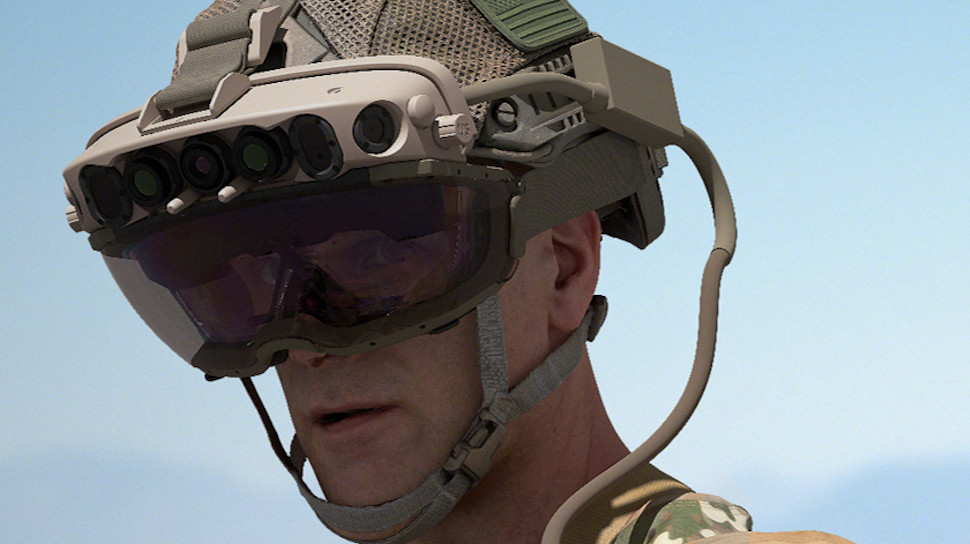Farewell HoloLens - Microsoft officially quits wearable headset technology, hands over billion-dollar DoD contract to Anduril
Anduril takes over Microsoft HoloLens DoD contract

- Microsoft passes $22bn IVAS contract to Anduril
- Move officially sees the last Microsoft HoloLens call it a day
- Palmer Luckey says company is "only getting started" on IVAS
Microsoft has officially ended its work in the VR hardware space by handing off its HoloLens project with the Department of Defense (DoD).
The company has announced it will be passing the work over to Anduril, meaning the entire project, thought to cost around $22 billion, will no longer belong to Microsoft in any way.
Anduril, headed by notorious tech bro Palmer Luckey, will now work with the DoD on the project, officially known as the Integrated Visual Augmentation System (IVAS), essentially building a specialized version of HoloLens for the US Army.
Anduril HoloLens?
“We are incredibly proud of the work our teams have put in to help the U.S. Army transform its concept of a soldier-borne, AR headset into reality with the IVAS program," Microsoft VP of mixed reality Robin Seiler said in a joint press release.
The news will mark the last part of the life of Microsoft HoloLens, the company's ambitious plan to launch into the wearable technology space.
The company had already confirmed it would be halting production and sales of HoloLens devices in October 2024, despite the latest model going on sale in 2019, with existing Microsoft HoloLens 2 devices receiving, "updates to address critical security issues and software regressions" until December 31 2027.
HoloLens 2 users did get a Windows 11 software update in April 2023, but the lifespan of the device seemed to be limited since Microsoft's halting of sales. However, the US Army remained committed to a HoloLens IVAS device, with an initial order of 5,000 headsets, thought to be worth around $373 million, signed off by Assistant Secretary for Acquisition Douglas Bush in September 2022 following successful field tests.
Sign up to the TechRadar Pro newsletter to get all the top news, opinion, features and guidance your business needs to succeed!
Anduril will now take over running of the IVAS program, although there's no confirmation yet on whether it will keep its entire budget, given the Trump administration's current fondness for saving cuts.
“Tactical heads-up-displays that turn warfighters into technomancers and pair us with weaponized robotics were one of the products in the original Anduril pitch deck for a reason,” Luckey wrote in a blog post announcing the news.
“If Anduril had been more than a dozen people when IVAS was first getting spun up all those years ago (at least the Tragic Heap guys didn’t win, our country really dodged a bullet there), I do believe our crazy pitch could have won this from the start,” he added, going on to tease some new features.
“Whatever you are imagining, however crazy you imagine I am, multiply it by ten and then do it again. I am back, and I am only getting started."
The original HoloLens headset was launched in 2016, with the company promising a new age of augmented and virtual reality experiences.
However initial reception and sales were poor, as was the case for the HoloLens 2, partly due to its $3,500 price tag at launch, which placed it firmly in the range of enterprises only.
You might also like
- Microsoft ends the AR category it created and leaves mixed reality to Apple
- We've put together a list of the best rugged tablets available
- These are the best rugged phones around today

Mike Moore is Deputy Editor at TechRadar Pro. He has worked as a B2B and B2C tech journalist for nearly a decade, including at one of the UK's leading national newspapers and fellow Future title ITProPortal, and when he's not keeping track of all the latest enterprise and workplace trends, can most likely be found watching, following or taking part in some kind of sport.
You must confirm your public display name before commenting
Please logout and then login again, you will then be prompted to enter your display name.